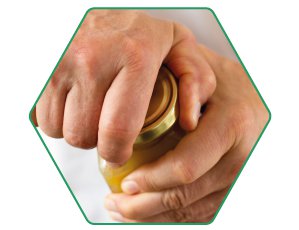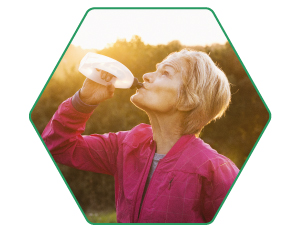1. Bauer J et al. Evidence-Based Recommendations for Optimal Dietary Protein Intake in Older People: A Position Paper From the PROT-AGE Study Group. J Am Med Dir Assoc. 2013;14(8):542-559
2. Rousset S, et al. Daily protein intakes and eating patterns in young and elderly French. Br J Nutr 2003; 90:1107-1115
3. Fulgoni VL 3rd. Current protein intake in America: Analysis of the National Health and Nutrition Examination Survey, 2003-2004. Am J Clin Nutr 2008; 87:1554S-1557S
4. Paddon-Jones D et al. Role of dietary protein in the sarcopenia of aging. Am J Clin Nutr 2008; 87(suppl):1562S– 1566S
5. World Health Organization. Protein and amino acid requirements in human nutrition: Report of a joint WHO/FAO/UNU expert consultation. Geneva: WHO Press; 2007. Report 935
6. Institute of Medicine of the National academies. Dietary Reference Intakes for energy, carbohydrate, fiber, fat, fatty acids, cholesterol, protein, and amino acids (macronutrients). Washington, DC: The National Academies Press; 2005
7. European Food Safety Authority (EFSA). Outcome of a public consultation on the draft scientific opinion on the EFSA Panel on Dietetic Products, Nutrition, and Allergies (NDA) on dietary reference values for protein. (2012)
8. Bauer J et al. Evidence-Based Recommendations for Optimal Dietary Protein Intake in Older People: A Position Paper From the PROT-AGE Study Group. J Am Med Dir Assoc. 2013;14(8):542-559
9. Rizzoli, R. et al. The role of dietary protein and vitamin D in maintaining musculoskeletal health in postmenopausal women: A consensus statement from the European Society for Clinical and Economic Aspects of Osteoporosis and Osteoarthritis (ESCEO). Maturitas. 2014; 79(1):122-32
10. European Food Safety Authority (EFSA) “Scientific Opinion on the substantiation of health claims related to protein and increase in satiety leading to a reduction in energy intake (ID 414, 616, 730), contribution to the maintenance or achievement of a normal body weight (ID 414, 616, 730), maintenance of normal bone (ID 416) and growth or maintenance of muscle mass (ID 415, 417, 593, 594, 595, 715) pursuant to Article 13(1) of Regulation (EC) No 1924/2006” (2010) https://www.efsa.europa.eu/en/efsajournal/pub/1811
11. European Food Safety Authority (EFSA) “Scientific Opinion on the substantiation of health claims related to protein and increase in satiety leading to a reduction in energy intake (ID 414, 616, 730), contribution to the maintenance or achievement of a normal body weight (ID 414, 616, 730), maintenance of normal bone (ID 416) and growth or maintenance of muscle mass (ID 415, 417, 593, 594, 595, 715) pursuant to Article 13(1) of Regulation (EC) No 1924/2006” (2010) https://www.efsa.europa.eu/en/efsajournal/pub/1811









